Hot Peppers
All hot peppers contain capsaicinoids, natural substances that produce a burning sensation in the mouth, causing the eyes to water and the nose to run, and even induce perspiration. Capsaicinoids have no flavor or odor, but act directly on the pain receptors in the mouth and throat. The primary capsaicinoid, capsaicin, is so hot that a single drop diluted in 100,000 drops of water will produce a blistering of the tongue.
"Capsaicinoids are found primarily in the pepper's placenta--the white "ribs" that run down the middle and along the sides of a pepper. Since the seeds are in such close contact with the ribs, they are also often hot. In the rest of the vegetable, capsaicinoids are unevenly distributed throughout the flesh, so it is likely that one part of the same pepper may be hotter ot milder than another. You can reduce the amount of heat in a chili pepper by removing the ribs and seeds, but you must wear gloves while doing so.
"Capsaicinoid content is measured in parts per million. These parts per million are converted into Scoville heat units, the industry standard for measuring a pepper's punch. One part per million is equivalent to 15 Scoville units. Bell peppers have a value of zero Scoville units, whereas habaneros -- the hottest peppers--register a blistering 200,000 to 300,000.Pure capsaicin has a Scoville heat unit score of 16 million.
Image |
Name |
Scoville Units |
Native Regions |
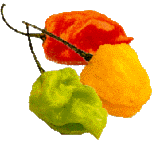
|
Habanero |
100K-300K |
Yucatan, Caribbean |
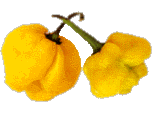
|
Scotch Bonnet |
100K-250K |
Jamaica, Caribbean, Belize |
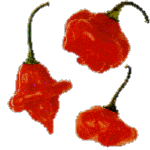
|
Jamaican Hot |
100K-200K |
Jamaica, other Caribbean islands |
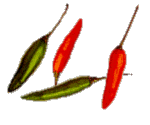
|
Thai |
50K-100K |
Southeast Asia, California |
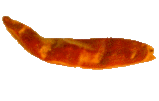
|
Cayenne |
30K-50K |
Louisiana, Mexico, Asia, Africa |
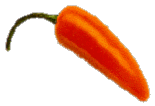
|
Serrano |
10K-23K |
Mexico, Southwest U.S. |

|
Wax |
5K-10K |
Mexico, California, Southwest U.S. |
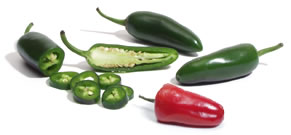
|
Jalapeno |
2.5K-5K |
Oaxaca, Chihauhau, Texas, Southwest US |
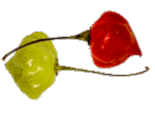
|
Rocotillo |
1.5K-2.5K |
South America |
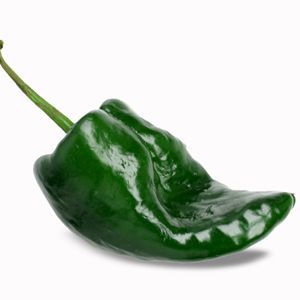
|
Poblano |
1K-1.5K |
Puebla, Mexico City region, California |
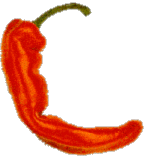
|
New Mexico |
500-1,000 |
Rio Grande Valley |
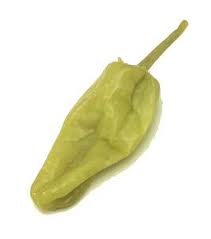
|
Petdtderoncini |
100-500 |
Mediterranean Basin, California |
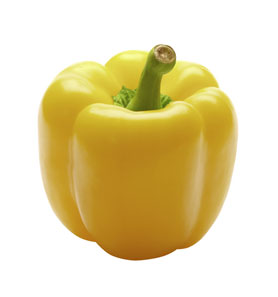
|
Bell Pepper |
0 |
Holland, Mediterranean Basin, California |
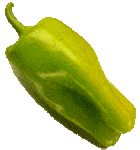
|
Sweet Italian |
0 |
Mediterranean Basin, California |
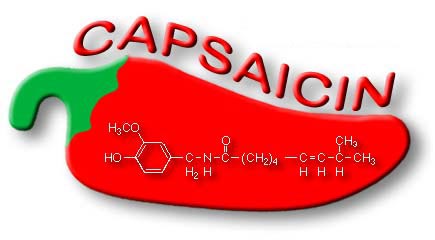
|
Pure Capsaicin |
16 Million |
Chemistry Labs |
Scoville Units Of Heat
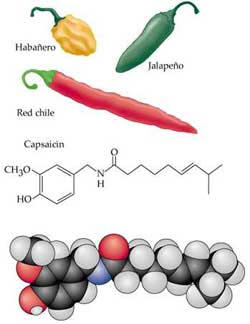
Spicy peppers contain a substance called capsaicin. Capsaicin is found mainly in the interior tissue to which the seeds adhere. This is what makes them taste hot.
Concentrated in the veins of the fruit, the compound stimulates your nerve endings making your brain "think" that you are in pain.
The brain responds by releasing substances called endorphins (like distance runners experience), which are similar in structure to morphine.
A mild euphoria results making peppers mildly addictive because of this hot pepper "high". Ask any pepper-head (and you don't have to run 20 miles).
Technically Speaking
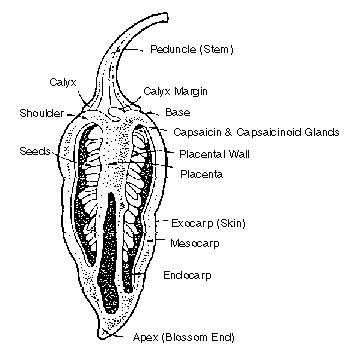
Capsaicin is a colorless, crystalline, bitter compound present in capsicum [Previously referred to as capsicine]. It has a molecular weight of 305.46. Capsaicin has a Melting Point of 65C, Boiling Point of 81C, Vapor Pressure of 40 and a Vapor Density of 1.59 (Air=1).
The range in capsaicin content in the pericarp of an average capsicum is about 0.17% to 0.58% and the inner sheath is 6.6% to 7.7%; color is concentrated mostly in the pericarp. Chili seeds contain 19% oil with 0.024% capsaicin content. The percentage of capsaicin in the capsicum plant depends on the species, geographical origin and the climatic conditions.
Capsaicin is produced by glands at the juncture of the placenta and the pod wall. The capsaicin spreads unevenly throughout the inside of the pod and is concentrated mostly in the placental tissue. The seeds are not sources of heat, as commonly believed. From one Kg. of cayenne pepper for example, approximately 2.13 g. of crude capsaicin can be isolated, which is about 20 times the amount found in paprika.
A Scoville Unit is a measurement of capsaicin level in a particular pepper or variety. Although peppers can vary from pod to pod, plant to plant, variety to variety, and even season to season, listed below is an approximate scale for several varieties of peppers:
Peppers With A Range Of Scoville Units Includes
0-100 - Bell/Sweet
500-1000 - New Mexican
1,000-1,500 - Espanola - Sandia
1,000-2,000 - Ancho & Pasilla
1,000-2,500 - Cascabel & Cherry & MiraSol (Pueblo)
2,500-5,000 - Jalapeno
5,000-15,000 - Serrano
15,000-30,000 - de Arbol & MiraSol Extra Hot, Barker
30,000-50,000 - Cayenne, Tabasco
50,000-100,000 - Chiltepin
100,000-200,000 - Scotch Bonnet & Thai (Locally called Dynamite)
200,000 to 300,000 - Habanero
575,000 - *The "Red Savina" Habanero has been tested at over 577,000 Scoville units! This is so much hotter than the normal Habanero chile pepper, that the "Guinness Book of Records" have accepted it as "the hottest chile pepper" in the world. Even now, breeders are attempting to beat this. The new Francisca Habanero is said to be hotter still!
Around 16,000,000 - Pure Capsaicin.